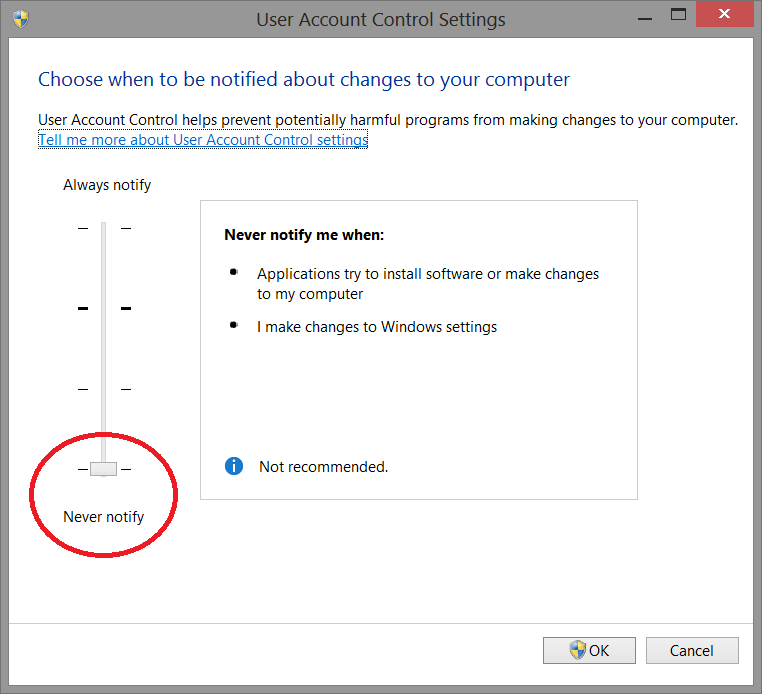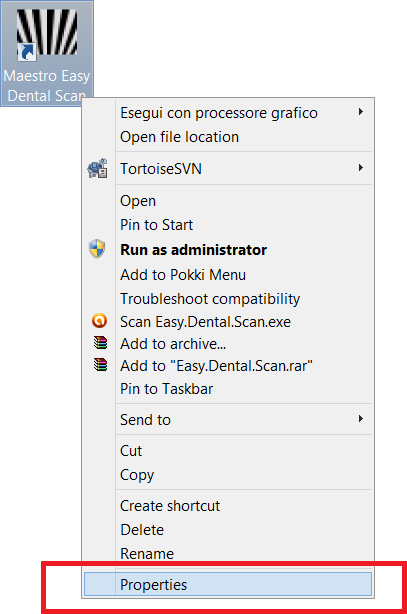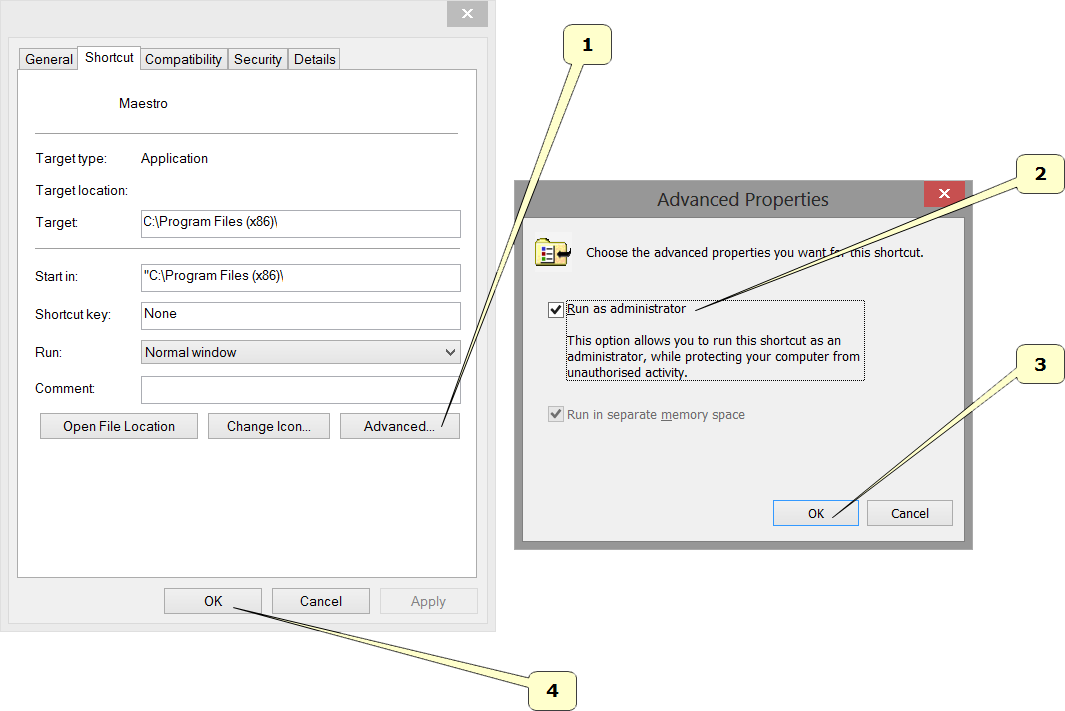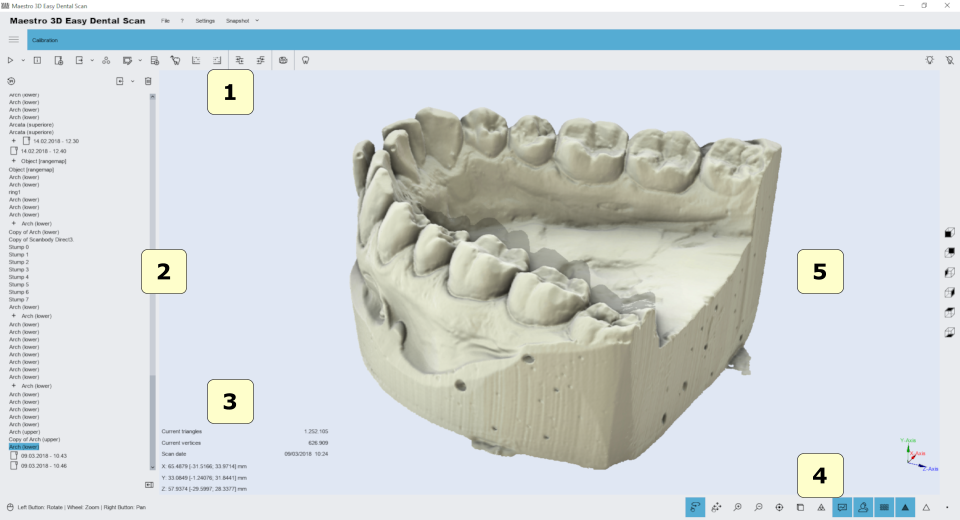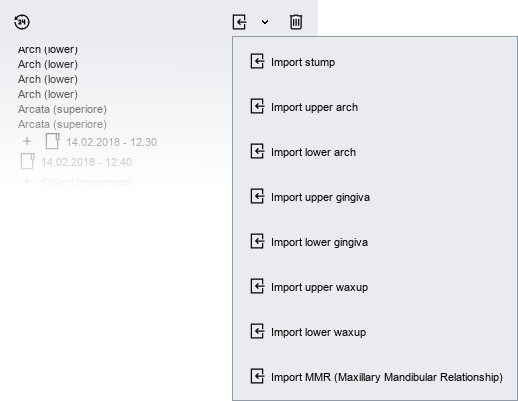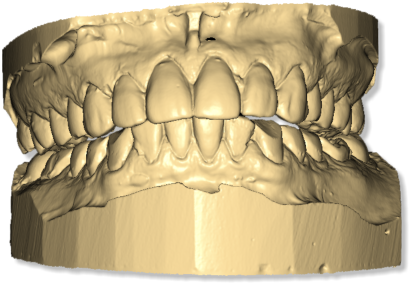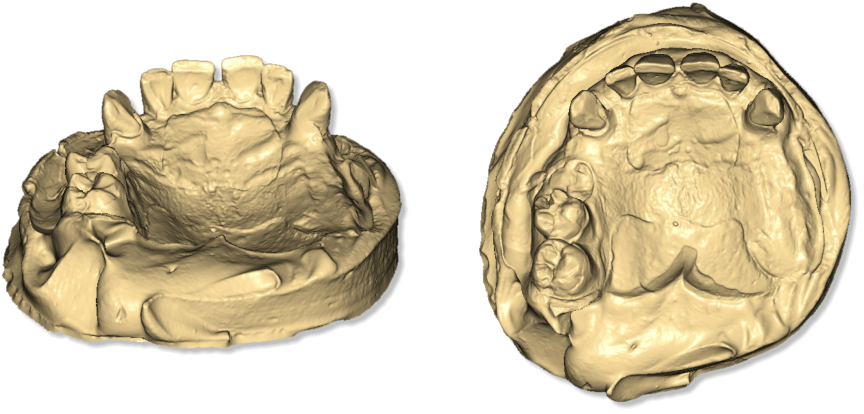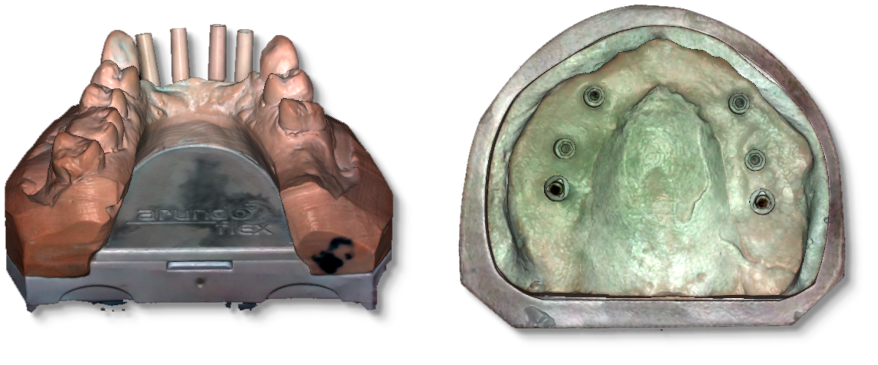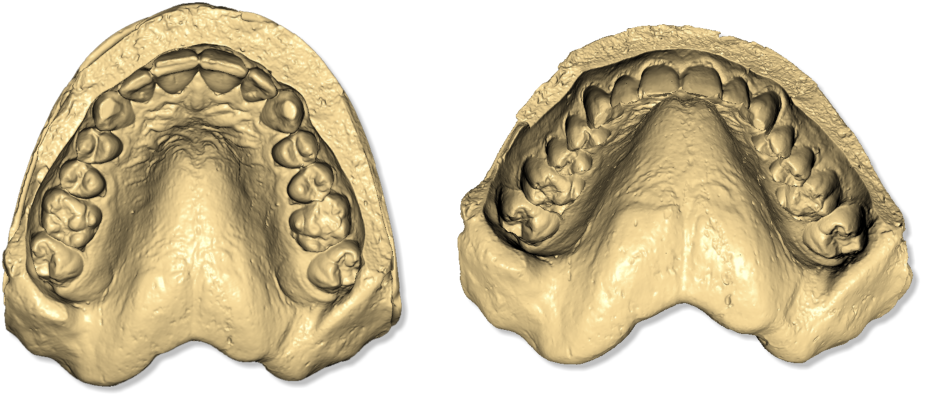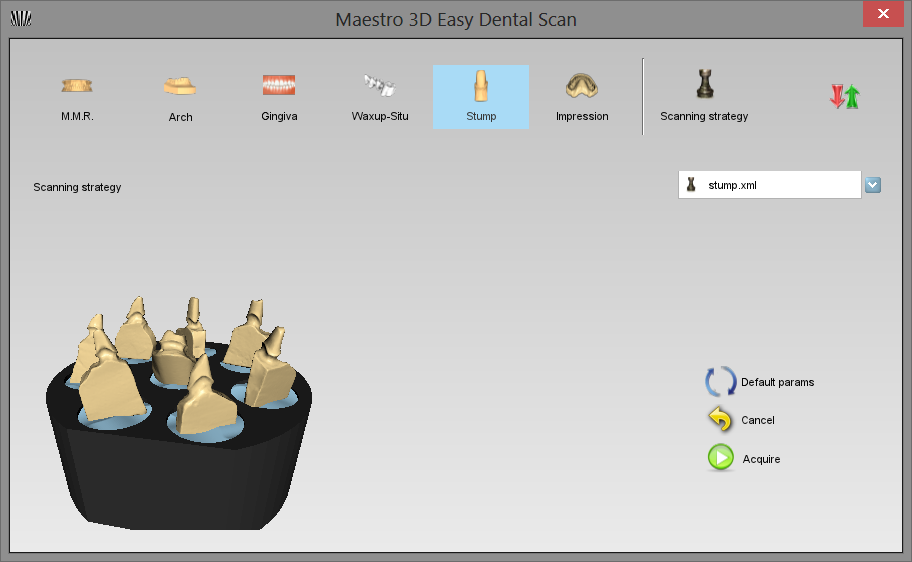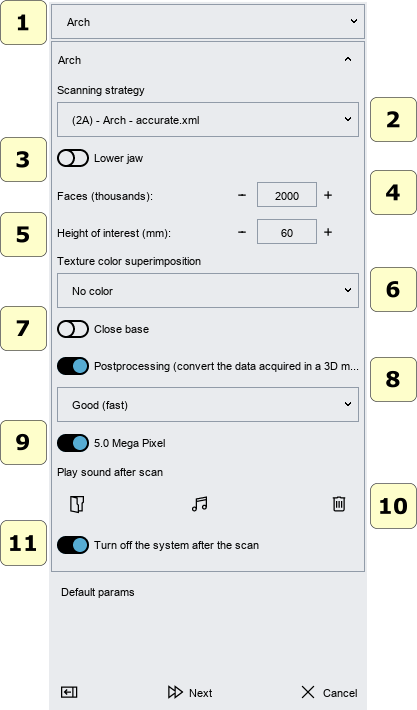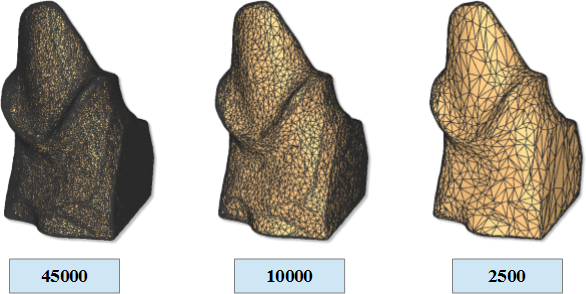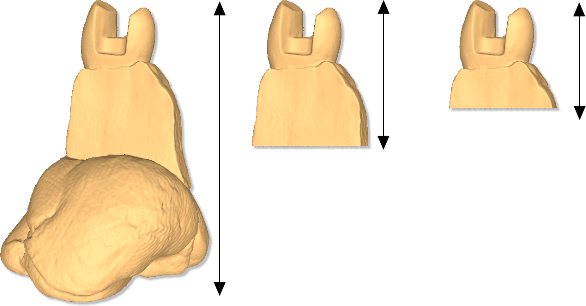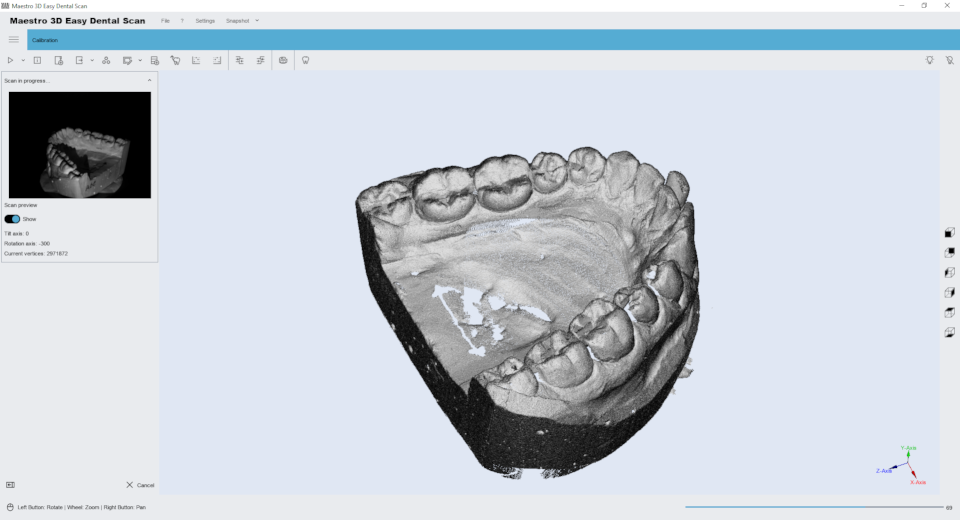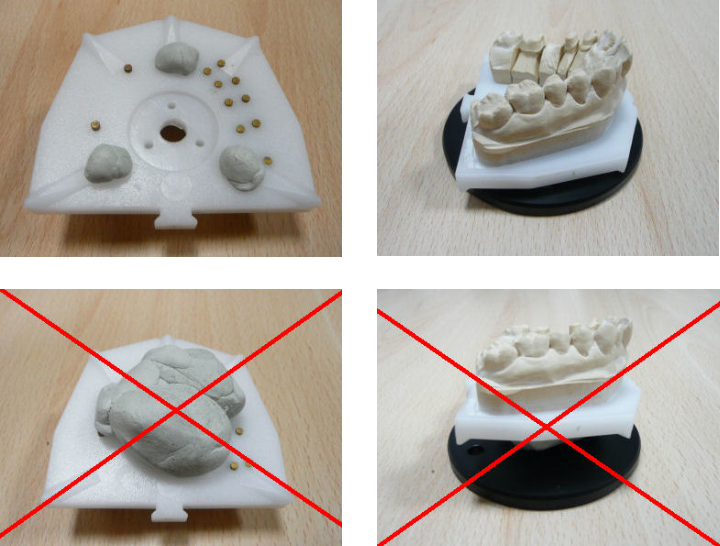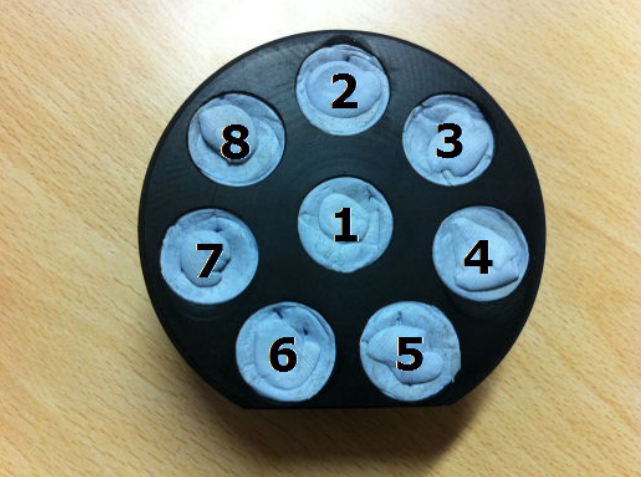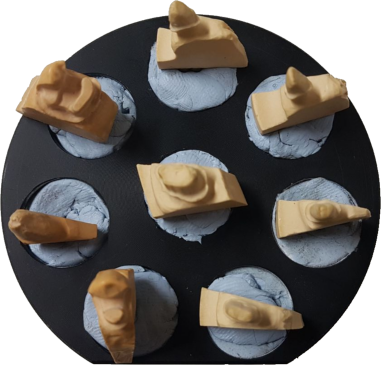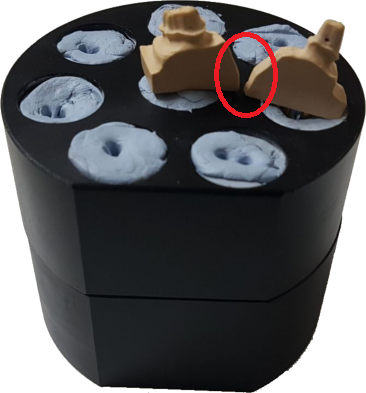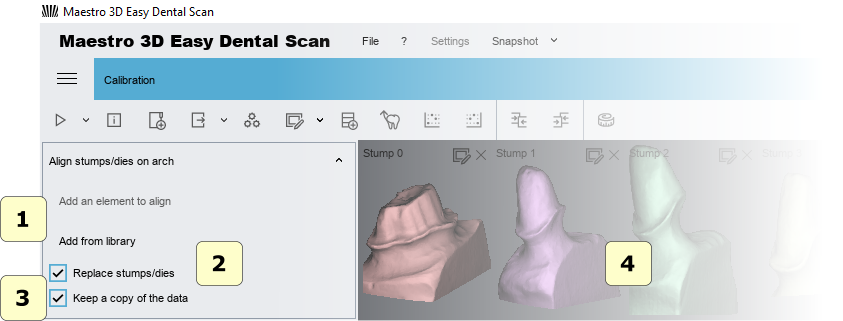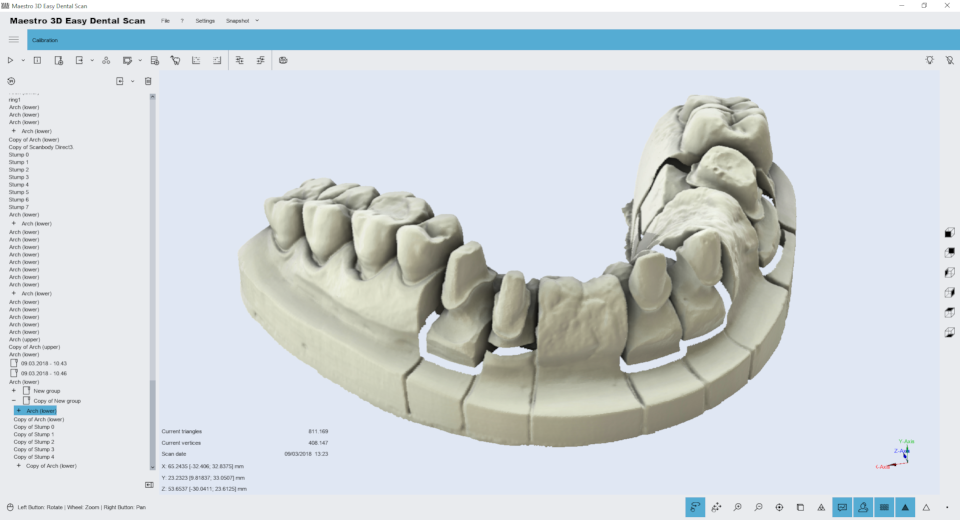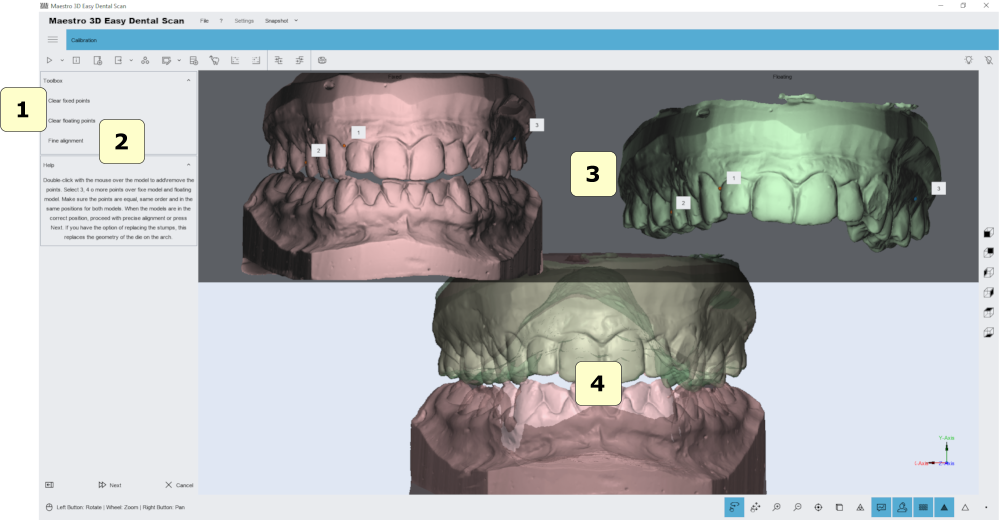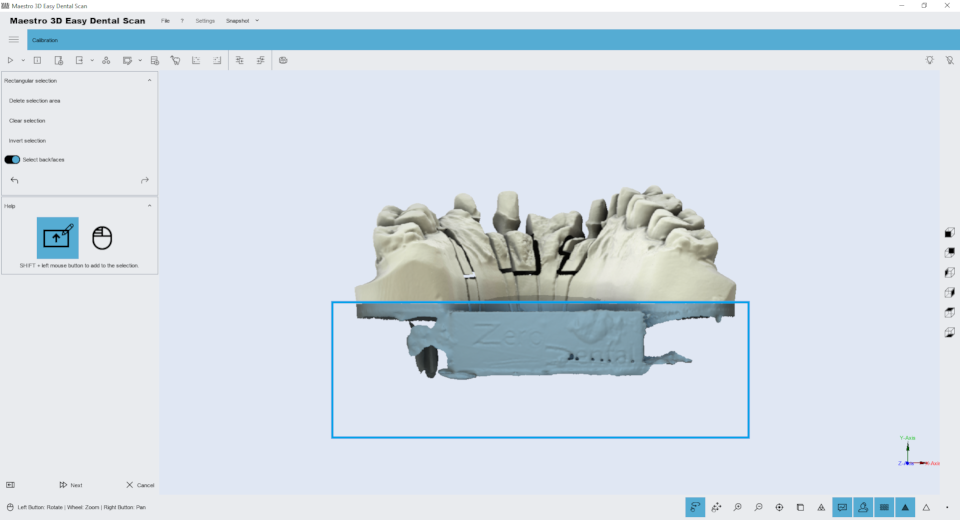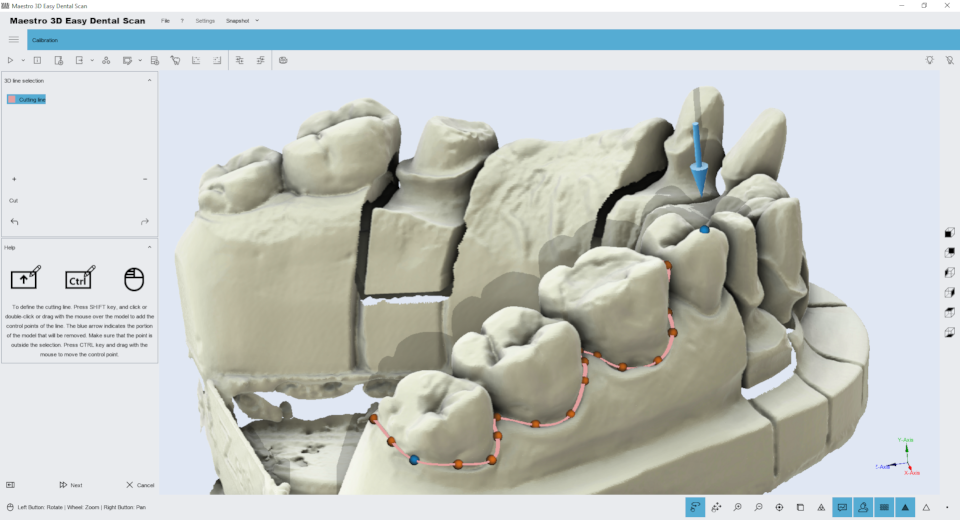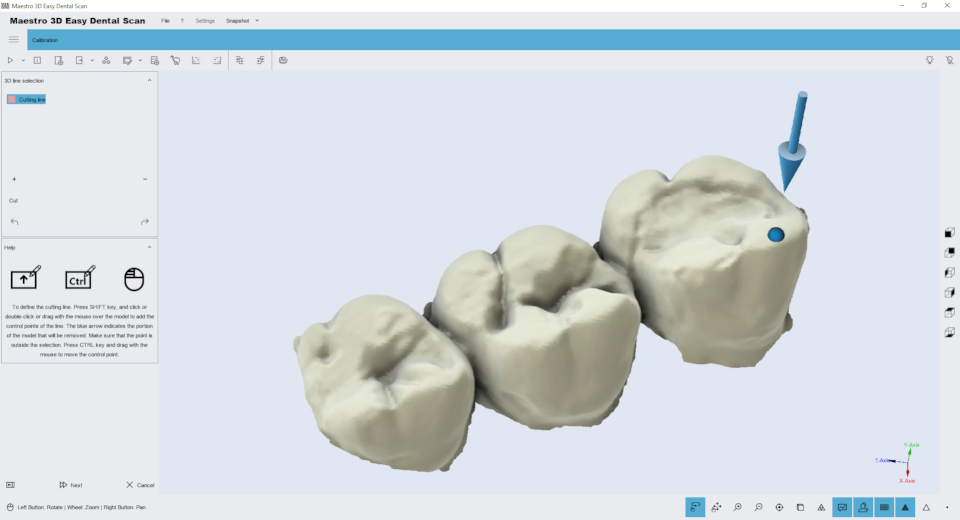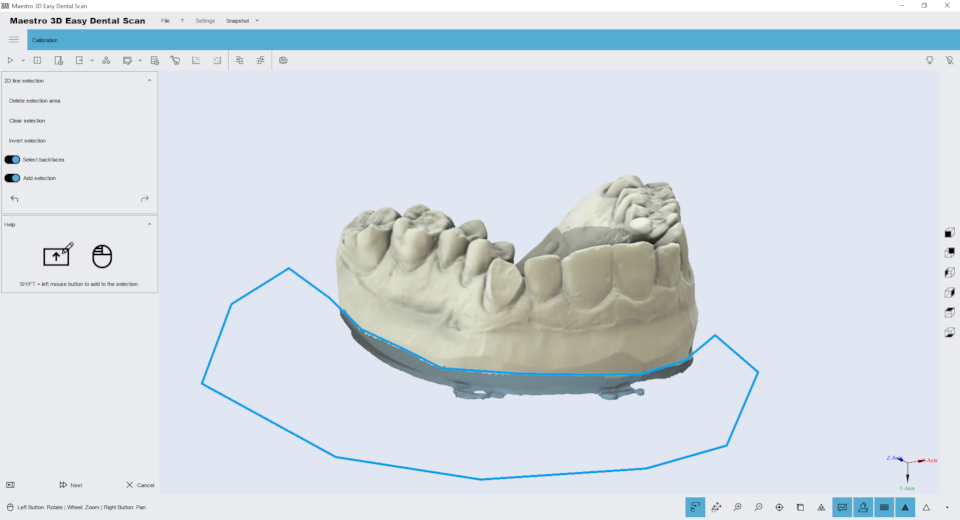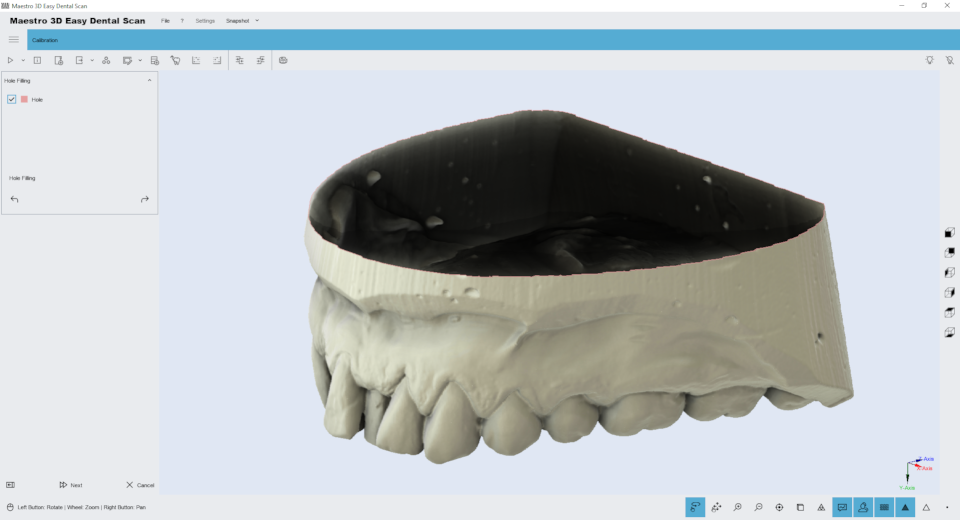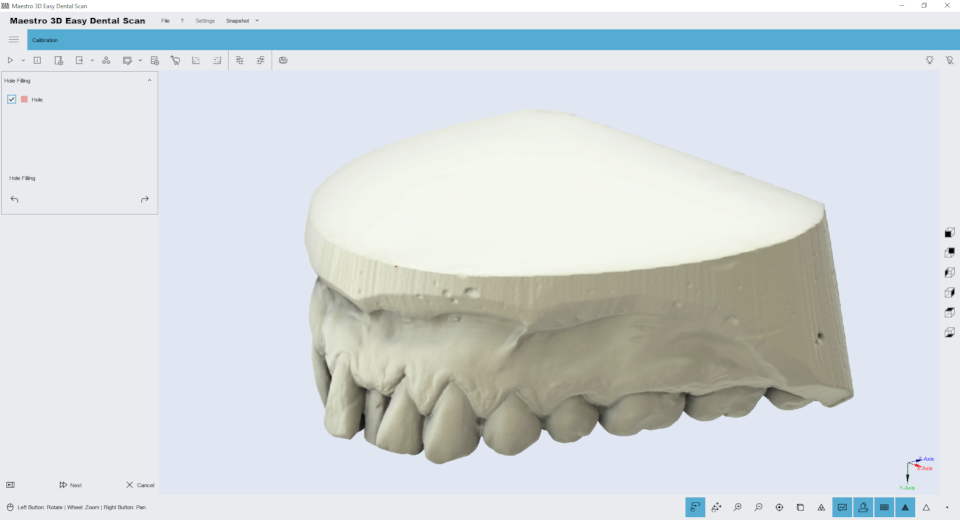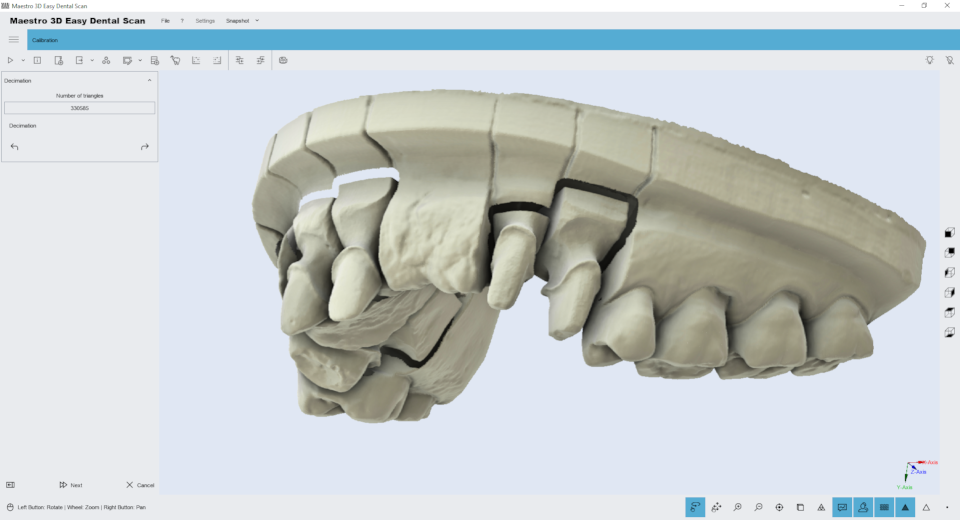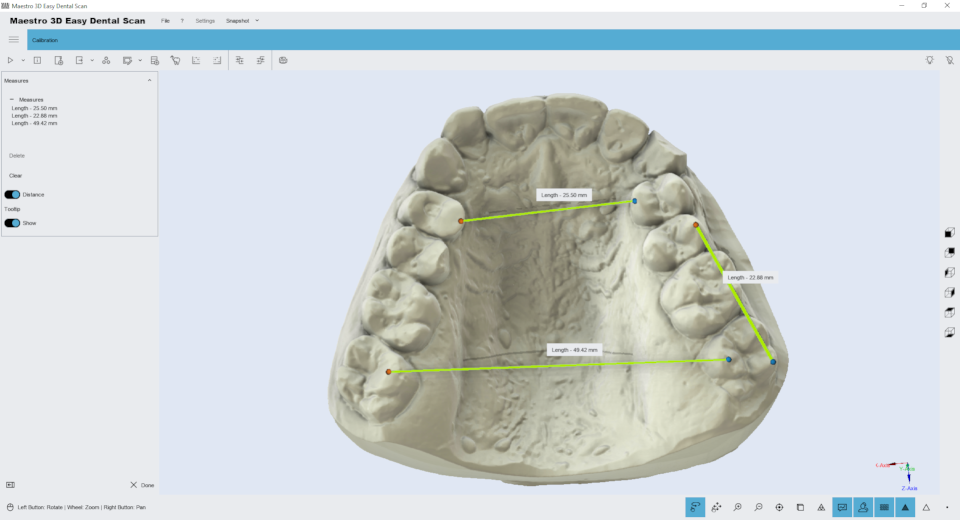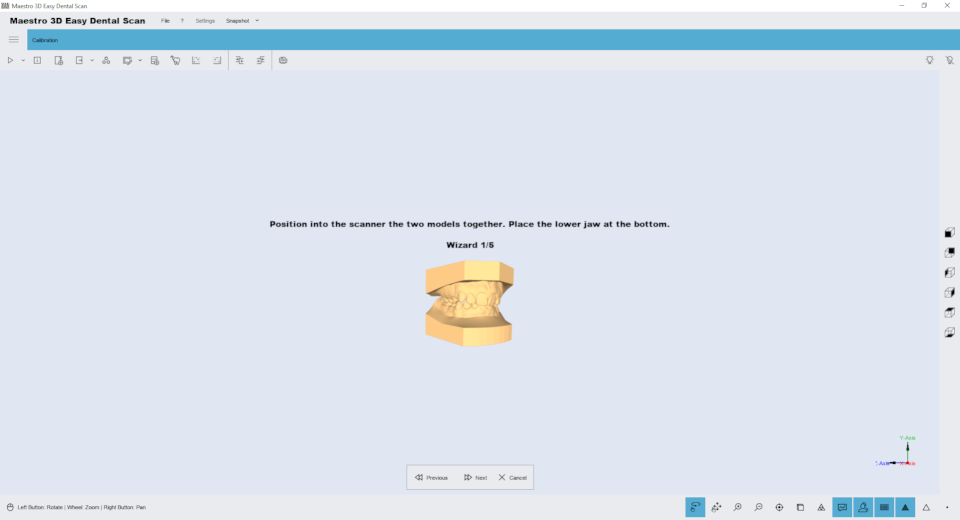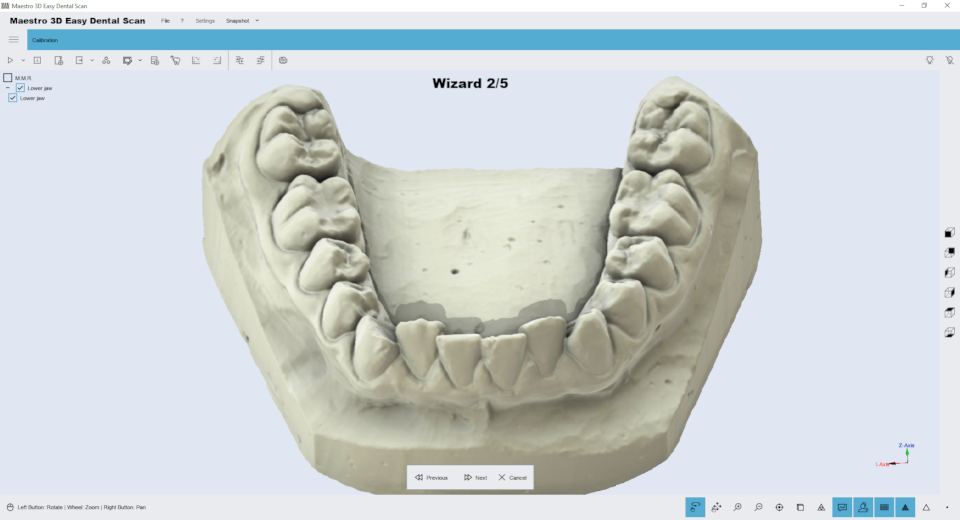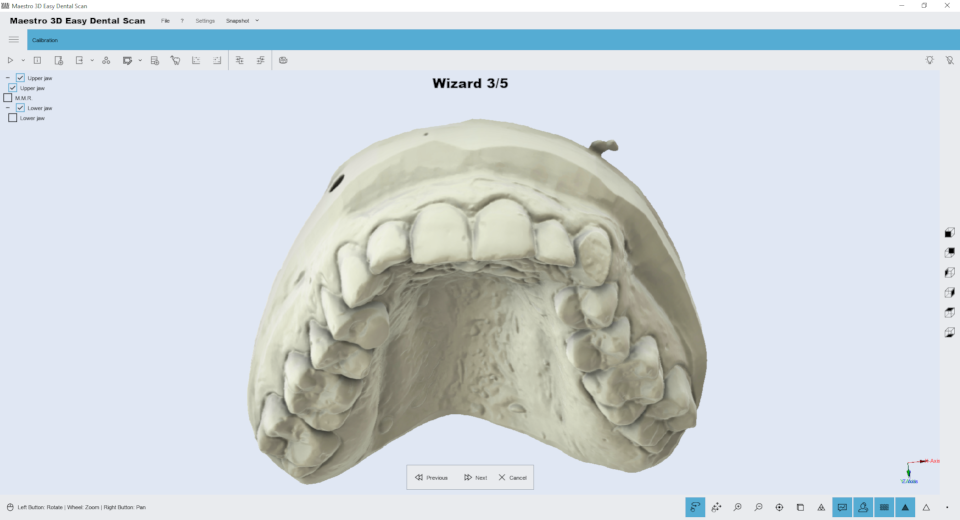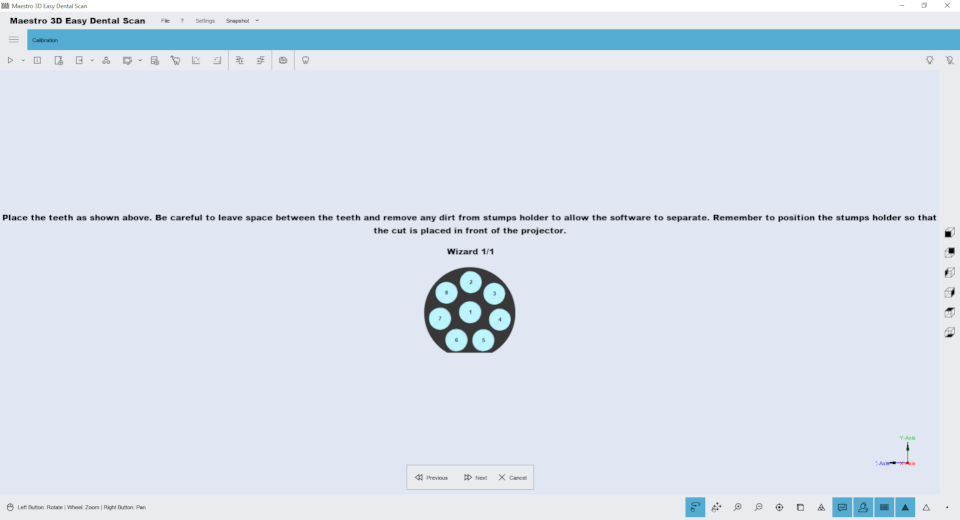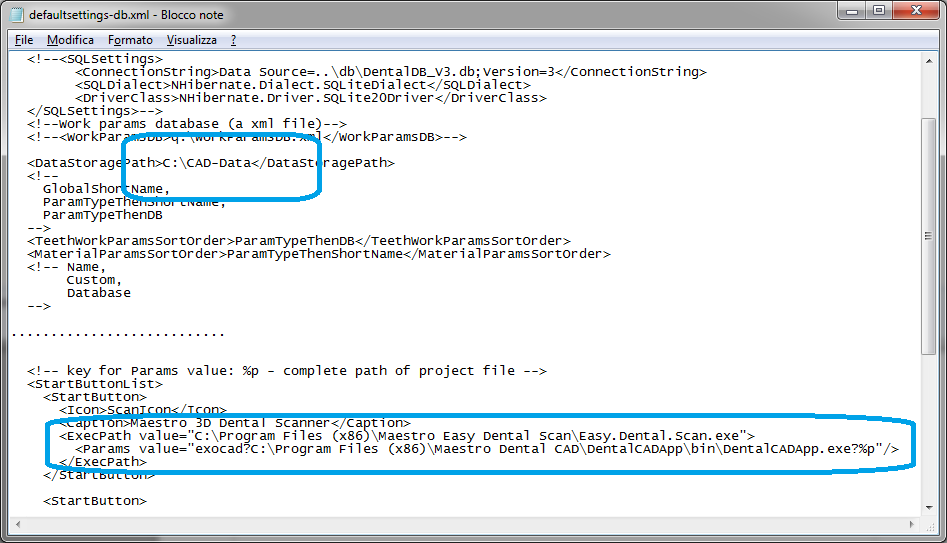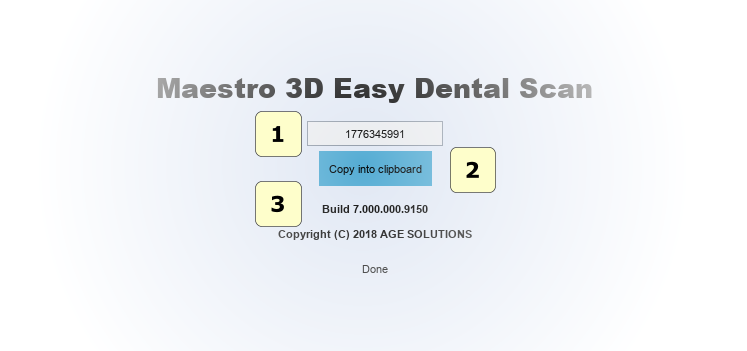Maestro 3D Easy Dental Scan - Manuale Utente
Introduzione all'utilizzo del software Maestro 3D Easy Dental Scan
Lo scopo di questo document è quello di introdurre, in modo semplice e veloce, l'utente all'uso del software di scansione Easy Dental Scan Software. Si consiglia di leggere attentamente questo documento prima di utilizzare Easy Dental Scan. Maestro Easy Dental Scan è il software di scansione ideato per gli scanner della linea Maestro 3D. Il software permette l'acquisizione automatica con un solo click di oggetti dentali e la creazione della superfice 3D. Il software innovativo garantisce prestazioni eccezionali, sfruttando appieno il calcolo parallelo offerto dalle più recenti tecnologie disponibili multicore e multithreading sul mercato.
UAC - Controllo Account Utente
Per non avere difficoltà e limitazioni nell'utilizzo del software è necessario settare lo slider dell'UAC - Controllo Account Utente al minimo come mostrato nella figura sottostante.
Per accedere alla finestra di settaggio: Pannello di controllo -> Account Utente -> Cambia impostazione Controllo Account Utente.
Diritti di Amministratore
Per eseguire correttamente il software è necessario settare correttamente i diritti di amministratore.
Seguire le istruzioni come indicato nelle figure sottostanti.
Tasto destro del mouse sull'icona del software per attivare il menù contestuale e selezionare la voce proprietà.
Seguire i passi come indicato nella sequenza da 1 a 4.
- Premere il pulsante Avanzate.
- Spuntare la voce Esegui come Amministratore.
- Premere il pulsante Ok.
- Premere il pulsante Ok.
Interfaccia Utente
La figura sotto mostra come appare l'interfaccia utente del software.
- 1) Toolbar Principale.
- 2) Tree Area.
- 3) Area Informazioni.
- 4) Toolbar Inferiore.
- 5) Area di Visualizzazione.
Toolbar Principale
La toolbar principale permette di accedere a tutte le funzionalità dell'Easy Dental Scan Software.
- 1)
 Nuova Acquisizione - Inizia una nuova scansione.
Nuova Acquisizione - Inizia una nuova scansione.
- 2)
 Stato Scanner - Attiva la finestra che monitorizza lo stato hardware del sistema.
Stato Scanner - Attiva la finestra che monitorizza lo stato hardware del sistema.
- 3)
 Nuovo Gruppo - Aggiunge un nuovo gruppo nell'albero delle scansioni (Tree). E' possibile spostare gli elementi della Tree dentro/fuori un gruppo mediante il drag&drop del mouse.
Nuovo Gruppo - Aggiunge un nuovo gruppo nell'albero delle scansioni (Tree). E' possibile spostare gli elementi della Tree dentro/fuori un gruppo mediante il drag&drop del mouse.
- 4) Esporta (Z Axis) - Esporta il file selezionato secondo l'asse Z. Si può selezionare anche l'opzione Esporta (Asse Y).
- 5) Postprocessa (converti i dati acquisiti in un modello 3D) - La funzione si abilita quando viene selezionato un elemento non postprocessato, questa operazione
puo' richiedere qualche minuto e converte i dati scansionati dallo scanner in una geometria triangolare.
- 6) Edita - Modifica gli elementi selezionati. Questa operazione e' utile per rimuovere gli artefatti dovuti alla scansione, per rimuovere la plastilina scansionata, per tappare i buchi, decimare i modelli scansionati, etc.
- 7) Importa uno scanbody dalla libreria.
- 8) Registra elementi sull'arcata - Attiva la procedura di allineamento automatico dei monconi.
- 9) Registrazione manuale.
- 10)
 Free Measures:
Free Measures:
- misure punto-punto.
- misure di angoli.
- 11) CAD - invia gli elementi selezionati al software CAD.
- 12) Viste:
- vista frontale.
- vista posteriore.
- vista lato destro.
- vista lato sinistro.
- vista dall'alto.
- vista dal basso.
- 13) Stato del proiettore.
- 14)
 Uscita.
Uscita.
Il tab della calibrazione è descritto qui: Calibration.
Toolbar Inferiore
La toolbar inferiore è l'area dello schermo che visualizza una barra di progresso durante ogni computazione e permette attraverso appositi pulsanti di cambiare le proprietà di visualizzazione.
- 1) ingrandisci [Key PGDown]/rimpicciolisci [Key PGUp].
- 2) mostra/nascondi trackball.
- 3) resetta trackball [Key R].
- 4) proiezione parallela [Key O], proiezione prospettica [Key P].
- 5) smooth shading [Key S], flat shading [Key F].
- 6) mostra/nascondi triangoli, bordi [Key E], punti [Key V].
Area di Visualizzazione / Editing e Area di Informazione
L'area di visualizzazione ed editing è l'area della finestra dove i modelli sono disegnati e visualizzati e dove le operazioni di editing sono consentite.
Nell'area di visualizzazione è possibile visualizzare\creare le basi virtuali, l'occlusione fra la mascella e la mandibola, visualizzare le misure dei denti, la lunghezza dell'arco e realizzare e mostrare il setup virtuale.
Per esaminare i modelli visualizzati, i parametri della camera (posizione, scalatura, rotazione) possono essere settati attraverso uno strumento chiamato trackball.
La trackball è uno strumento semplice da utilizzare, Premere e trascinare il tasto sinistro per ruotare intorno al modello. Ruotare la rotellina centrare del mouse per effettuare lo zoom. Premere e trascinare il tasto destro per muovere la camera.
L'area di informazione è la parte dello schermo che mostra le informazioni relative all'elemento selezionato.
Tree Area
La Tree Area contiene tutti i modelli scansionati. La Tree Area ha una organizzazione ad albero e mediante l'utilizzo di gruppi consente di tenere un ordinamento dei modelli scansionati. Per selezionare un modello della Tree Area cliccarci sopra con il tasto sinistro del mouse. I modelli selezionati verranno visualizzati sulla Visualization Area. Per selezionare più modelli cliccare tenendo premuto il tasto CTRL.
La Tree Area può contenere i seguenti elementi:
| |
Moncone |
| |
Arcata Superiore |
| |
Arcata Inferiore |
| |
Gengiva Superiore\Inferiore |
| |
Waxup Superiore\Inferiore |
| |
Relazione Mascellare\Mandibolare |
| |
Rangemap |
| |
Gruppo |
Per ognuno di questi elementi e' associato un insieme di operazioni accessibili tramite le icone abilitate nella Main Toolbar. Queste consentono di accedere alle funzioni di post processamento relative a quel particolare elemento.
Accedendo al menù a tendina come mostrato nella figura seguente, è possibile importare nella tree area del software il file in formato *.STL\é.PLY relativo all'elemento selezionato.
Target objects
Some examples of target objects:
- Maxillary and Mandibular relationship
- Upper-Lower Jaw
- Other examples of dental arch
- Impression
- Stumps
Scan parameters
To start a new acquisition just press ![]() New acquisition in the Main Toolbar.
New acquisition in the Main Toolbar.
Through this window you can choose the type of object to be scanned
Just click ![]() Advanced Options to access to advanced options for scanning.
Advanced Options to access to advanced options for scanning.
If you choose to scan an arch, gum, waxup or impression, you can choose if it's an upper or lower element.
Advanced Options
In questa parte della finestra si possono definire i parametri della scansione.
- Scanning Strategy:
It's possible to choose a scanning strategy. The strategies are available depending on whether the tilt module is activated or not. If you do not have the Tilt module active, all of the strategies shown only work with the rotary axis.
|
WARNING It may happen that with a low number of acquisitions (eg 4-5) for certain models may fail to scan because there is not sufficient overlap geometry between the various shots. In this case it is sufficient to increase the number of acquisitions into the strategy. |
- Faces (triangles):
This number defines the number of triangles you want in your final model. The figure below shows the same model with 45000, 10000 and 2500 triangles. The precision and accuracy in the 3 models is equivalent. Among the 3 models changes the number of triangles that approximate the surface geometry. The system acquires always at max precision and max accurancy. Only after obtaining the final three-dimensional model at max number of triangles, it is decimated to obtain the desired number of triangles. Is also possible to decimate the model later.
|
WARNING Greater is the number of triangles, greater is the size of the STL file.
|
Recommended values:
| Arch\Gum\Waxup\Impression | 180000 - 300000 triangles |
| Stump | 15000 - 60000 triangles |
| MMR | 180000 - 300000 triangles |
- Height of interest:
This param allows you to choose the height of interest of the model, (this height value is measured starting from top to bottom).
First picture (from left to right) shows the model of a stump where the height of interest parameter is disabled and then the stump is acquired entirely including the adhesive putty support that sustains it. Subsequent images display the same stump with the height of interest parameter set at 20 mm and 15 mm respectively (as can be seen the adhesive putty support is automatically removed).
It is important to remember that, in order to make the best use of this parameter, the model (arc, one or more stumps, etc...) must be placed perpendicular to the surface of the rotary table.
|
IMPORTANT Cut the model choosing the height of interest reduces the computation time of postprocessing and can improve the quality of the results. (Especially a smaller volume of the point cloud of the stumps can lead to a better yield of the final model). |
In any case, you can always remove the not interesting geometry, at any time, by editing the model.
- Texture Color Superimposition:
This requires the Texture Color Superimposition module active. The activation is carried out through a software license. This is useful to obtain models with a RGB color texture or grey scale color texture. For example it helps create very accurate margin lines as marked on the model.
- Improve alignment:
If this option is checked, the software will use a procedure that will improve the alignment of the various acquisitions. This is not recommended if you use strategies with numerous acquisitions, (more than 20). This is because the time and the memory taken could be very high.
- Close base:
If this option is checked, the software close the bottom base of the model automatically.
- Postprocessing (convert the data acquired in a 3D model):
If this option is checked, the system automatically postprocessing the data acquired and it builds the triangular geometry surface. If it is not checked the data will be not postprocessed. It is possible postprocess the data acquired later.
- Good (fast): this option is recommended.
- Best (slow): this option take more computation time and make a 3D models with more details.
|
TIPS To reduce the time of interaction with the scanner, where you have many models to be scanned is advisable not to make the postprocessing after each scan. In this case it is recommended scan all model (not check the option "Postprocessing", no check the option "Turn off") and at the end of the work, turn off the system and select from the tree area all items (rangemaps) and press button to postprocess all models. |
- Play sound after scan:
It's possible to choose a *.wav file to play after the scan and after the postprocessing.
- Turn off the system after the scan:
Turn off the system after the end of the scan.
|
TIPS Remember to turn the system off when not in use to avoid wasting the lamp. |
Scanning process
This window shows the progress of the scanning phase. This may take a few seconds or a few minutes depending on the strategy chosen.
In the window on the left shows the 2D image acquisition and 3D image on the right.
After this operation, if the the option "Postprocessing" was checked the software automatically generates the surface of the model from the acquired points, and adds to the Tree Area a new element. Then selecting it in the Tree Area, the model is displayed into the Visualization Area.
If the option "Postprocessing" was not checked, the software adds to the Tree Area a new element with a greyscale icon. Before you can perform any operation of this model is necessary to postprocess the data acquired.
|
WARNING Before scanning make sure that the model is correctly positioned on the rotary table and that the front door of the scanner is closed. During the scan please don't move neither the scanner nor its support plane. |
Proper positioning of objects
In the following images the correct positioning of the models on the rotary table is showed. The image below shows an arch correctly positioned on the rotary table. The arch should be placed at the center of rotary table supported by the putty or any other adhesive that keeps it well anchored to the table.
The arch should be parallel to the surface and should not be tilted.
It is possible to put on the rotary table of the scanner more stumps simultaneously. See the following pictures to observe the proper placement of stumps. After the scanning process, the software automatically recognizes and separates the individual stumps, adding an item in the Tree Area for each acquired stump. The pictures below show how to correctly place the stumps on the rotary table of the scanner. The scanner may be equipped with a multidie plate of 8 teeth.
The numbering (1..8) on the plate meets the numbering of the elements added to the Tree Area only if the plate is placed in front of the scanner. When working with more than a stump it is absolutely necessary that adhesive putties sustaining stumps and the body of each stumps will be separated at least some millimeters from each other. In this way the scanning software is able to recognize each stump, see the correct stumps position in the picture below:
An example of incorrect positioning:
|
WARNING Shown in the picture above an incorrect positioning of the stumps. The support of the putty of each stumps should not join and the bodies of the stumps shall not touch or should not be too close because this incorrect positioning prevents the scanning software to identify and separate the individual elements. |
|
TIP The stump/s should not be placed with an excessive inclination, because the scanner is not able, in these conditions, to acquire all the margin line. So you should always place the stumps perpendicular to the rotary table surface. |
Scanning Strategy
The following image shows the window for managing the scanning strategies.
- 1) Scanning group: MMR, Arch, Stumps, Impression.
- 2) Strategy name.
- 3)
- New Strategy.
- Save current Strategy.
- Delete current Strategy.
- 4) Add tilt command (before adding the command selects the rotation degrees).
- 5) Add rotation command (before adding the command selects the rotation degrees).
- 6) Commands:
- Clear all commands.
- Delete selected command.
- Add tilt home position command.
- Add rotation home position command.
- Add an alignment group.
- Add a single acquisition.
- Start the strategy simulation.
- 7) add a batch acquisition. (before adding the command select the number of rotary table steps of the rotary Axis).
|
TIPS:
|
Stumps registration
The registration of stumps is totally automatic and it allows to replace the low resolution stumps, acquired with the arch, by the high resolution stumps acquired without the arch.
Select into the Tree Area the arch with the stumps (which are to be replaced) and click the button ![]()
After the arch is displayed in the Visualization Area with a constrained view so that it can be inspected only from above.
- 1) To add the stumps\scan body to substitute, select these from tree area and press the buttons.
- 2) Options:
- if replace stumps is checked, the high resolutions of the single stump will be replaced with the lower resolutions stump scanned with the arch. This is recommended if you need to work with a dental cad software. If not select this option the stump will be only aligned.
- If this option is checked the software make a backup copy of the data.
- 3) Choose the kind of registration procedure (1 point registration or 2D selection registration).
- 4) Preview area of the stumps.
|
TIP: If the selected stump is not the correct stump, just close the preview window to remove it from the registration process. You can register up to 16 stumps simultaneously. |
After having selected and added the stumps, press the SHIFT key and left mouse button double click with the left mouse button over the center of the head of the low resolution stumps to indicate the position where every stump must be registered.
By double clicking over the head of the stumps, it is added to the Visualization Area a sphere (called marker) associated with a number. Color and number, as shown in the picture, these are associated with the right stump.
|
TIP: To remove a marker double-click on it. |
Before to proceed with the registration, please make sure that each marker is associated with the right stump.
To proced with the registration press the button ![]() .
.
A progress bar placed in the Bottom Toolbar will indicate the progress of the registration process.
At the end of the registration process the result of the registration is displayed in the Visualization Area, where low resolution stumps have been replaced with high resolution stumps.
If you are satisfied with the result press the button ![]() to finish and save the registration obtained or press the previous button to return to previous step.
to finish and save the registration obtained or press the previous button to return to previous step.
If one or more stumps are not correct aligned, press the close button near the marker and then after having completed this task you can re-register only those stumps.
If the registration is not satisfactory, please verify that markers have been placed in the correct position as explained previously (in the center of the head of each stump and in the correct order).
|
TIP: It is also possible substitute the stumps on the arch with a manual alignment. |
Manual 3-2-1 alignment
With the manual registration process, is possible to align any pair of models. To align two models. For example useful to align a stump on an arch or an arch or bite with a antagonists reference model.
To align the two models need to select the fixed model ![]() (example maxillary mandibular relationship) and the floating model
(example maxillary mandibular relationship) and the floating model ![]() (example arch).
The next image shows the manual alignment window.
(example arch).
The next image shows the manual alignment window.
To align the floating object over the fixed object you have to add some points in the fixed model that appears to the left of the screen and the same points should be added to the floating object in the right of the window. You must add at least 3 points on each model.
- 1) Clear fixed or floating point.
- 2) Fine alignment. Improves the initial alignment given by the points entered by the user.
- 3) In case you are align a stump over an arch you can check this option to replace the geometry of the high resolution stump on the lower resolution stump of the arch.
- 4) Preview area where are showed the fixed and floating model.
- 5) Alignment result.
|
TIP: Press the SHIFT key and left mouse button double click to add a point over the model. |
Editing Filters
Editing with 2D rectangle
With this button ![]() you can access the editing features of the rectangular selection.
The image below shows the filter window.
you can access the editing features of the rectangular selection.
The image below shows the filter window.
Holding down the SHIFT key and the left mouse button you can draw a rectangular selection area. The area of the selected geometry will appear colored red. In the toolbox on the left side of the screen there are buttons to delete the selected area, invert the selection, clear the selection.
To save the changes and return to the previous screen, press the button ![]() .
.
Editing with 3D polyline
With this button ![]() you can access the editing features of the 3D polyline selection.
The image below shows the filter window.
you can access the editing features of the 3D polyline selection.
The image below shows the filter window.
Holding down the SHIFT key and the left mouse button you can draw a 3D polyline over the model. This function is useful to remove the gum or the waxup from a model. After you have drawn the polyline just double click into the area that you want to delete. The image below shows the result of the filter.
To save the changes and return to the previous screen, press the button ![]() .
.
Editing with 2D selection
With this button ![]() you can access the editing features of the 2D selection.
The image below shows the filter window.
you can access the editing features of the 2D selection.
The image below shows the filter window.
Holding down the SHIFT key and the left mouse button you can draw a 2D selection area. The area of the selected geometry will appear colored blu. In the top of the screen there are buttons to delete the selected area, invert the selection, clear the selection.
To save the changes and return to the previous screen, press the button ![]() .
.
Holefilling
With this button ![]() you can access the editing feature of holefilling.
The image below shows the filter window.
you can access the editing feature of holefilling.
The image below shows the filter window.
Just press the button ![]() in the toolbox on the left side of the screen to filling all hole in the model. This is useful to fill the bottom of the base of a model. The image below shows the result of the filter.
in the toolbox on the left side of the screen to filling all hole in the model. This is useful to fill the bottom of the base of a model. The image below shows the result of the filter.
To save the changes and return to the previous screen, press the button ![]() .
.
Decimation
With this button ![]() you can access the editing feature of decimation. With this feature it is possible to reduce the number of triangles of the model. The filter removes more triangles in the model areas with less features keeping better details in the most important areas of the model as the margin line or teeth geometry. The image below shows the filter window.
you can access the editing feature of decimation. With this feature it is possible to reduce the number of triangles of the model. The filter removes more triangles in the model areas with less features keeping better details in the most important areas of the model as the margin line or teeth geometry. The image below shows the filter window.
Just choose the triangles number and press the button ![]() in the toolbox on the left side of the screen to reduce the number of triangle of the model. To save the changes and return to the previous screen, press the button
in the toolbox on the left side of the screen to reduce the number of triangle of the model. To save the changes and return to the previous screen, press the button ![]() .
.
Free Measures
In order to perform the measures of length or angles, select the item to inspect and then press the ![]() measures button.
measures button.
|
TIPS: double-click with left mouse button to add a point. |
Stato dello Scanner
Through this function, you can monitor the status of the scanner hardware. The window will show the status of each hardware device inside the scanner.
Ortho Studio Wizard
This scanning wizard helps the user to make all necessary scans and alignments to obtain a complete case to work into Ortho Studio software.
The following image shows the first step of the scan. In this phase you can scan maxillary and mandibular relationship. In this window you can change the scanning settings and the scanning strategy.
The following image shows the result of the previous scan, the maxillary and mandibular relationship. Now the user can scan the lower arch.
The following image shows the result of the previous scan, the lower arch. Now the user can scan the upper arch.
Now it's possible to perform the alignment of the upper and lower arch respect to the relationship.
The procedure of alignment is the Manual 3 2 1 Alignment.
After that the scanning software send the correct data to the Ortho Studio software.
Dental CAD Wizard
This scanning wizard helps the user to make all necessary scans and alignments to obtain a complete case to work into all dental cad integrated with Maestro 3D Scanner. The following image shows an example of a wizard step of the scan. In this window you can change the scanning settings and the scanning strategy.
Exocad Wizard
To integrate the scanner with the exocad software you need to edit the file \exocad-folder-installation\DentalDB\config\defaultsettings-db.xml as shown in the figure below.
<DataStoragePath>C:\CAD-Data</DataStoragePath>
...
<StartButtons>
<Button>
<Icon>ScanIcon</Icon>
< caption > Maestro 3D Dental Scanner < /caption >
<ExecPath value="C:\Program Files\Maestro Easy Dental Scan\Easy.Dental.Scan.exe">
<Params value="exocad?C:\Program Files\exoCAD\DentalCADApp\bin\DentalCADApp.exe?%p"/>
</ExecPath>
</Button>
...
- <ExecPath value = is the path where you have installed the Easy Dental Scan.
- <Params value = is the string exocad? and the path where you have installed dentalCADApp with ?%p at the end of the string.
FAQ
How can I see the Software version and the dongle serial?
From the menu of the main window, tap on the enter ? -> About.... The image below shows the About window of the Software. In this window there is the dongle serial (tap on the adjacent key to copy it in the clipboard) and the version number Build
- 1) Dongle Serial.
- 2) Copy Dongle Serial into Clipboard.
- 3) Software Build Release version.
How can I see if my Software version is updated to the last available?
From the main menu tap on the entry File -> Check for updates.
How can I know which modules are active?
From the main menu tap on the entry File and tap on the entry Activate for each available module. Here, a message that will show if the module is active will appear; otherwise a window to import the license file that will activate the module in case it is not, will open.
How can I make a backup of all the scans?
Just make a copy of the folder where the software saves all scans. By default the folder is c:\MaestroData\.
The software is very slow on startup, what can I do?
If the software is very slow on startup, the cause is probably that the save folder (by default c:\MaestroData\) contains many scans. Just empty the folder or delete it completely and restart the software.
How can I change the save folder?
Edit the file application.settings.xml which is located in the installation folder of the software and change the string MaestroFolderData="c://MaestroData". To restore the settings with default value, just delete the file application.settings.xml and restart the software.
Metal parts can be scanned?
Yes it's possible but in order to improve scanning of metal parts you must use a scanning spray. In the market there are a lot spray but we advise the [Vacalon quickcheck spray].
